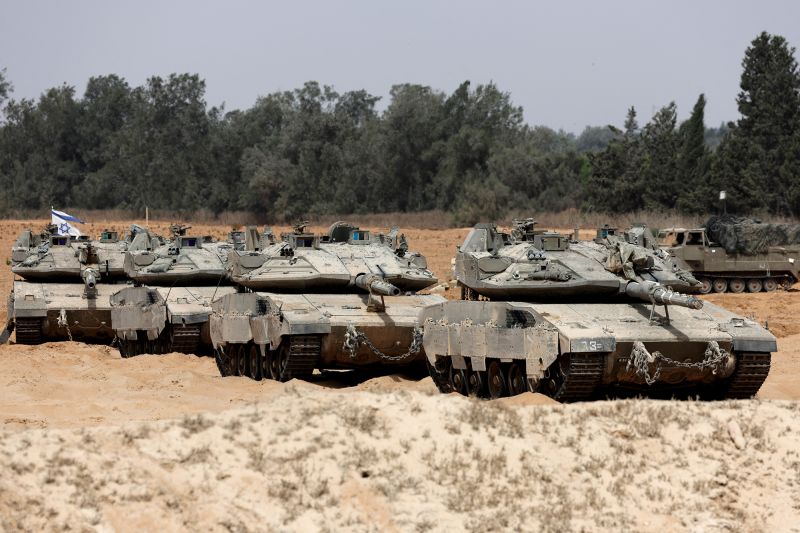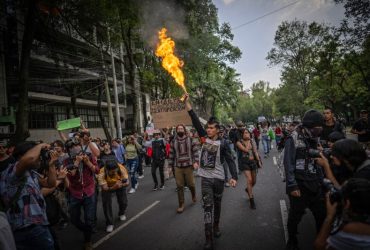Donald Trump has not been shy about his desire for an end to the war in Gaza.
After the 12-day conflict between Israel and Iran concluded with a ceasefire, the US president has been pushing hard for a truce between Israel and Hamas, saying he was “looking for it to happen next week,” when Prime Minister Benjamin Netanyahu is set to visit the White House.
Trump announced Tuesday that Israel had “agreed to the necessary conditions” to finalize a 60-day ceasefire. Netanyahu will convene his full cabinet on Saturday night to discuss it. Hamas, meanwhile, said it was considering the latest proposal, without indicating whether it would accept it.
The two sides have long had conflicting demands that negotiators have been unable to bridge, but there are renewed hopes of a deal as the war enters its 21st month. Here’s what to know.
Why now?
Netanyahu’s government has faced mounting international criticism for the suffering its war is inflicting on Palestinians in Gaza.
Israel imposed a total blockade on humanitarian deliveries to the enclave in March. It somewhat eased the blockade in May, after a chorus of global experts warned that hundreds of thousands of people could soon starve.
Hundreds of Palestinians in Gaza have been killed by Israeli strikes in recent days. And aid distribution has been marred by violence, with hundreds killed on their way to try to obtain food from the Gaza Humanitarian Foundation (GHF), the controversial US-backed aid initiative.
Pressure is also growing on Netanyahu from within Israel. Opposition leader Yair Lapid said Wednesday that he would join the coalition government to make a hostage deal possible.
Trump predicted Tuesday that Netanyahu wanted to end the war. “He wants to. I can tell you he wants to. I think we’ll have a deal next week,” Trump told reporters.
What’s in the proposed deal?
The precise details of the new proposal for a 60-day ceasefire and hostage release deal remain murky.
The Qatari prime minister previously said Qatar and Egypt had been working to find a “middle ground” to move forward from the US-conceived truce proposed months ago. That proposal outlined a 60-day ceasefire during which Hamas would release 10 living Israeli hostages and the bodies of a further 18 hostages taken by Hamas during its attacks on October 7, 2023.
Of the 50 hostages still in Gaza, at least 20 of them are believed to be alive, according to the Israeli government.
As part of the latest proposal, Israel has also agreed to allow a surge of humanitarian aid through traditional UN-run humanitarian channels rather than through the controversial US-backed Gaza Humanitarian Foundation, the Israeli official said.
What are Israel’s demands?
In addition to the aim of bringing the hostages home, Netanyahu has not wavered from his more maximalist aims: disarmament of Gaza and the destruction of Hamas’ military capabilities and governance abilities.
“I’m telling you — there will be no Hamas. No ‘Hamastan.’ We are not going back to that. It’s over,” Netanyahu said Wednesday. “We will bring back all our hostages.”
But over the weekend, the prime minister made a rhetorical shift in laying out Israel’s goals – for the first time prioritizing the return of hostages ahead of what he once called the “supreme objective” of defeating Hamas.
Netanyahu said “many opportunities have opened up” following Israel’s military operations in Iran, including the possibility of bringing home everyone still held captive by Hamas. “Firstly, to rescue the hostages,” he said. “Of course, we will also need to solve the Gaza issue, defeat Hamas, but I believe we will accomplish both missions.”
It comes as the Israeli military this week recommended pursuing a diplomatic path in Gaza after nearly two years of fighting and the elimination of much of Hamas’ senior leadership.
What about Hamas?
Hamas has three main demands: a permanent end to the fighting, for humanitarian assistance to be carried out by the United Nations, and for Israel to retreat to the positions it held on March 2 this year, before it renewed its offensive and occupied the northern part of the Strip.
In response to the earlier Trump administration-backed ceasefire proposal in May, Hamas requested US assurances that permanent ceasefire negotiations will continue and that fighting will not resume after the 60-day pause.
Whether the ceasefire will be temporary or a pathway to a permanent truce is the biggest sticking point between the warring parties.
Hamas has also shown no willingness to relinquish its political and military power in Gaza.
When were the previous ceasefires?
In the 21 months of war between Israel and Hamas, ceasefires have been in place for a total of only nine weeks.
More than 57,000 people, of which more than 17,000 are children, have been killed in Gaza during the fighting, according to the Palestinian health ministry.
The first ceasefire came into effect in November 2023, but lasted only a week. In that time, 105 hostages were released from Gaza, in exchange for scores of Palestinian prisoners.
A second ceasefire was not struck until January 2025, shortly before Trump’s return to the White House. In just over 8 weeks – the first “phase” of the ceasefire – Hamas freed 33 hostages, with Israel releasing around 50 Palestinian prisoners for every Israeli freed.
Under the planned second stage, Israel was supposed to agree to a permanent ceasefire. But Israel resumed its offensive on March 18, shattering the ceasefire and derailing the talks, saying it did so to put pressure on Hamas to release the remaining hostages.




